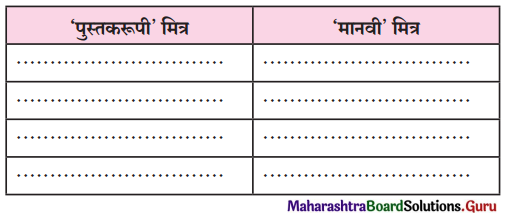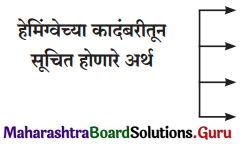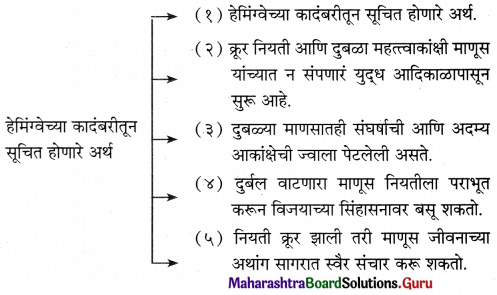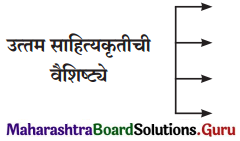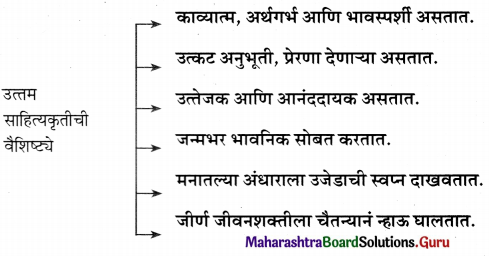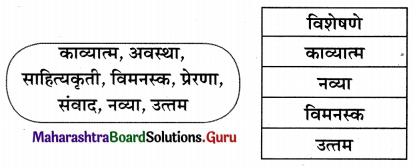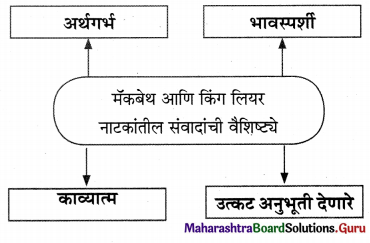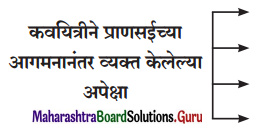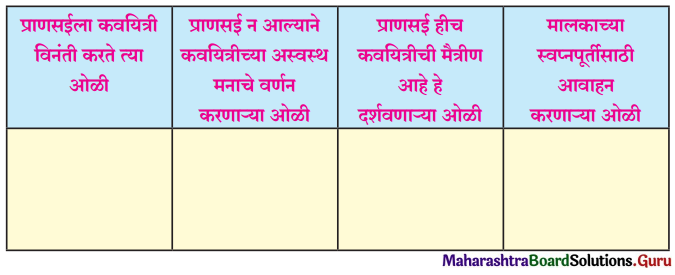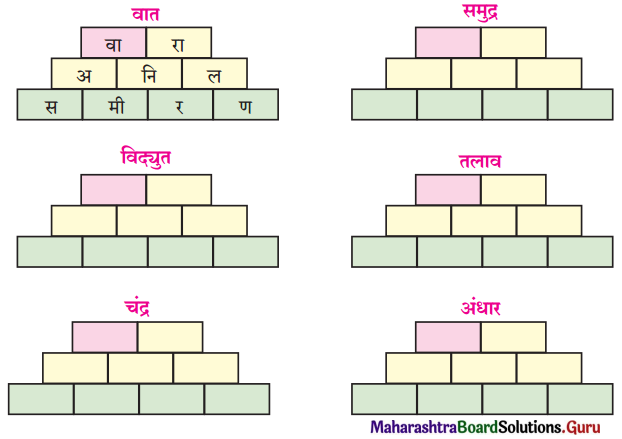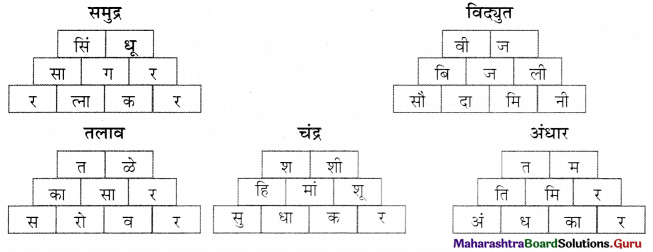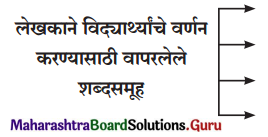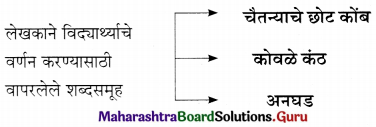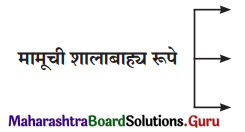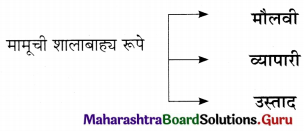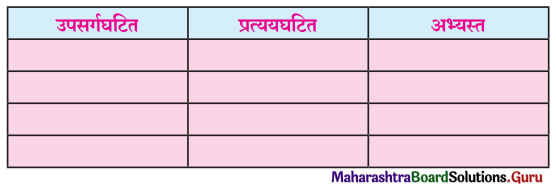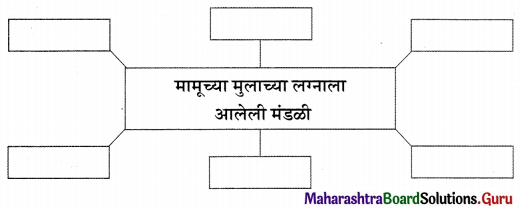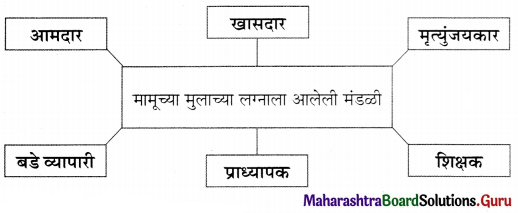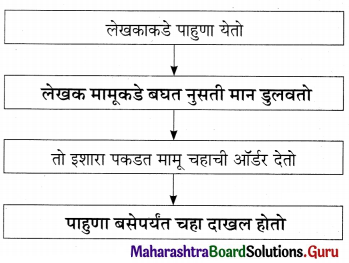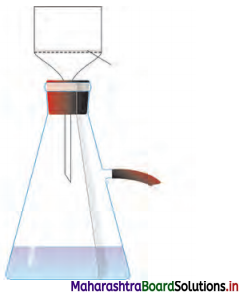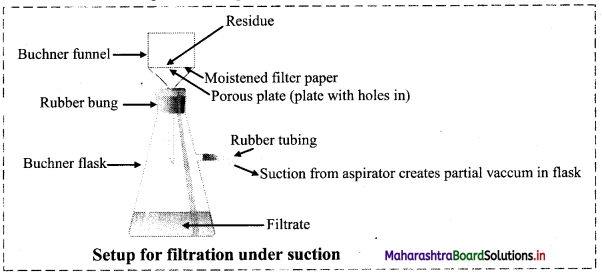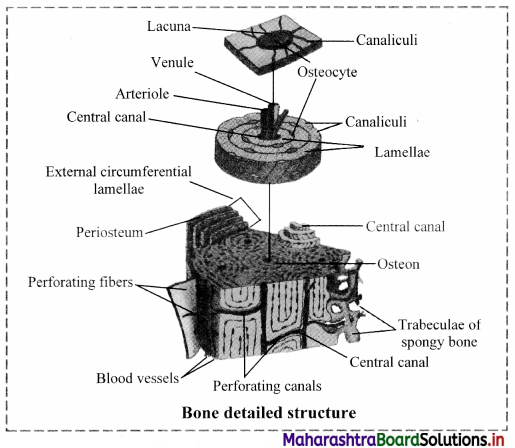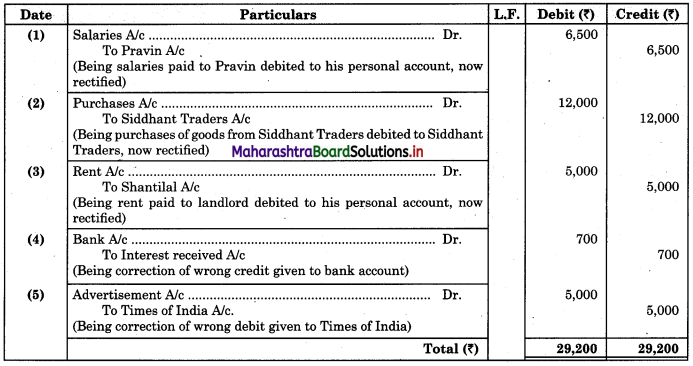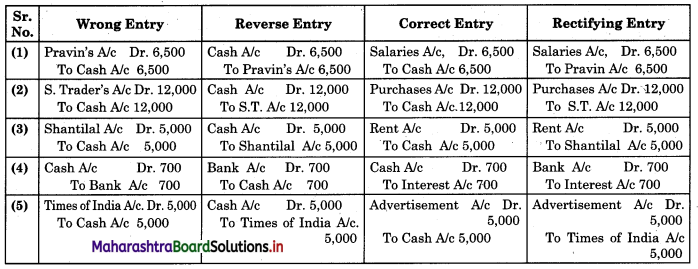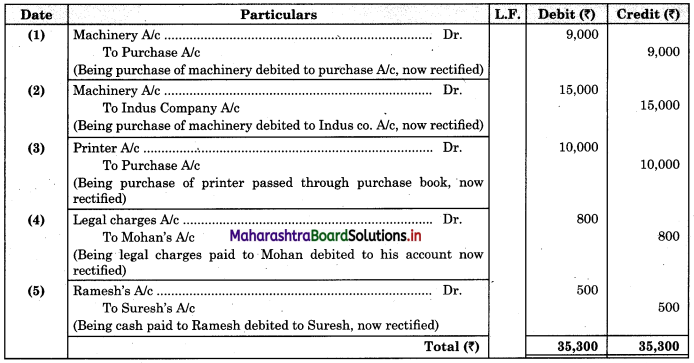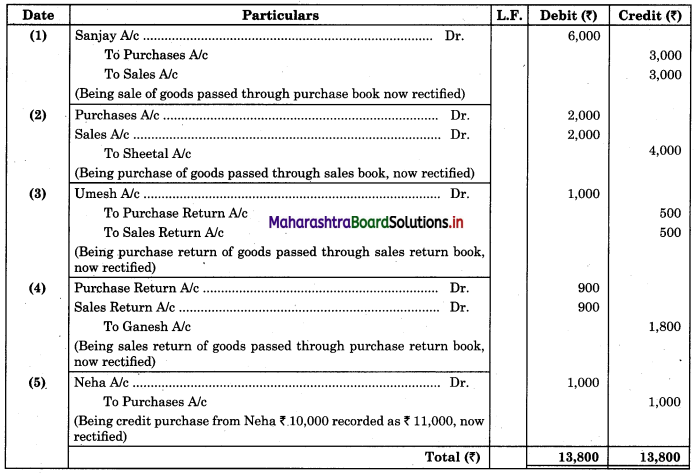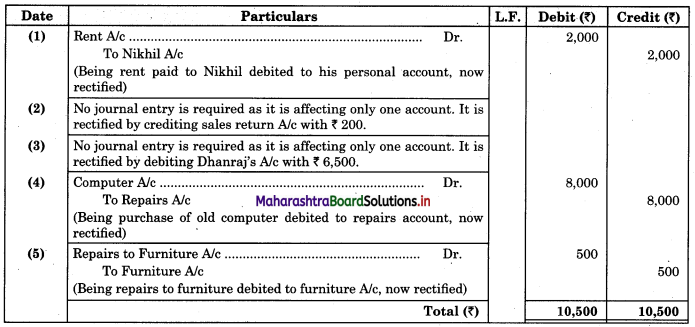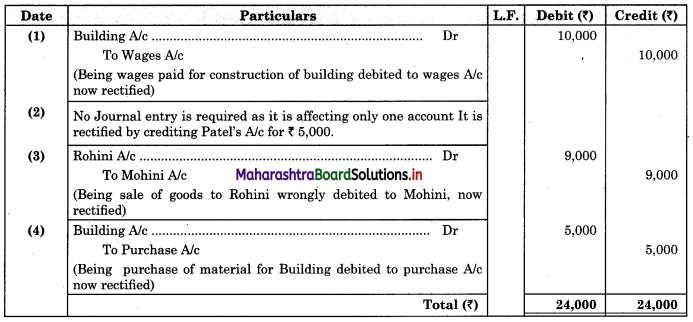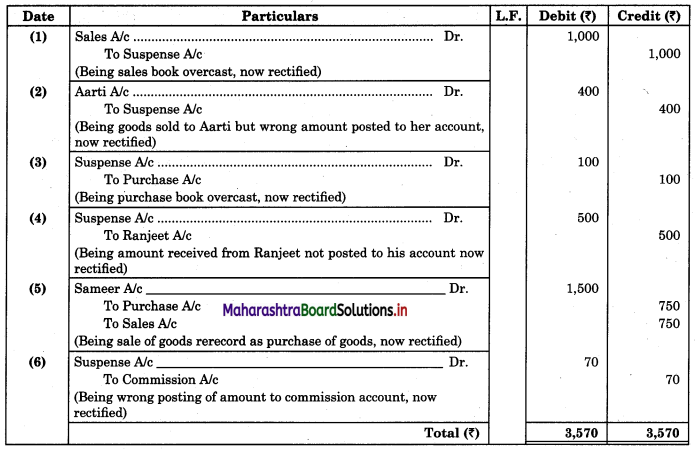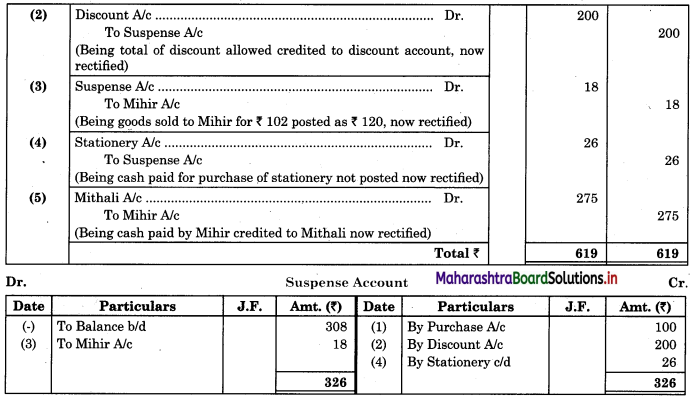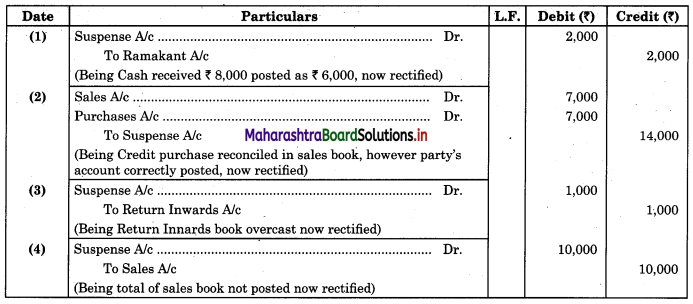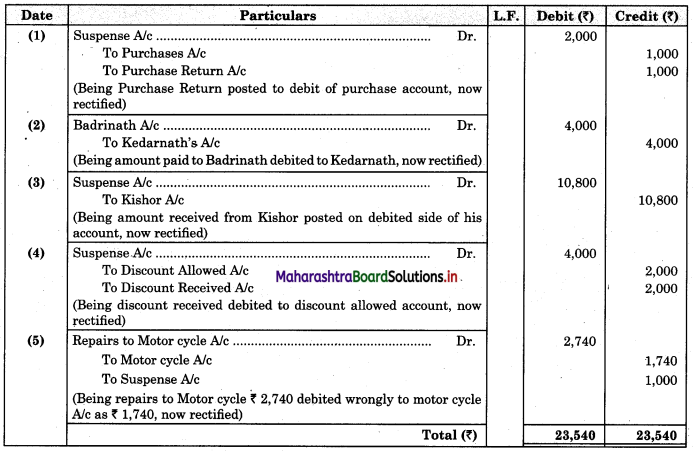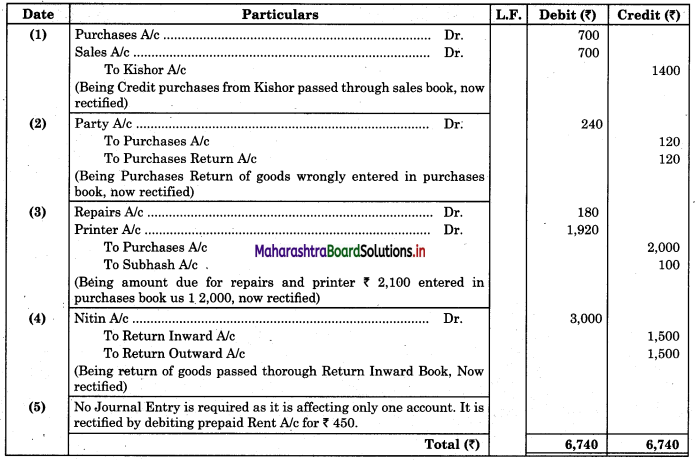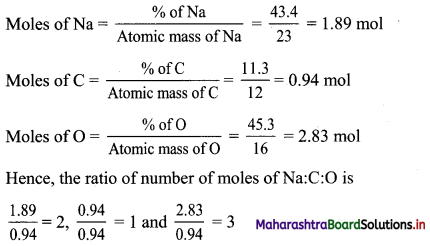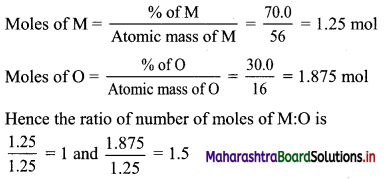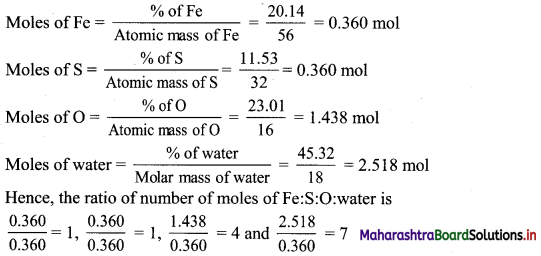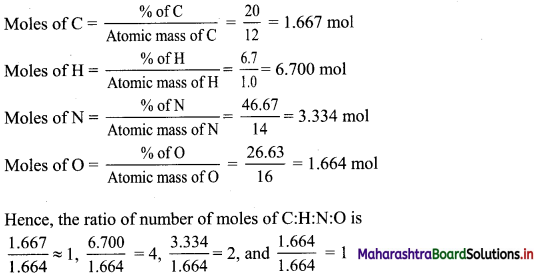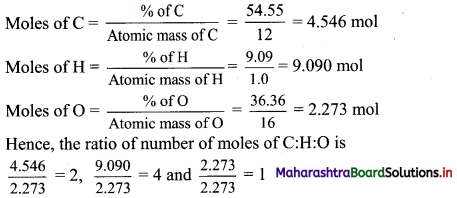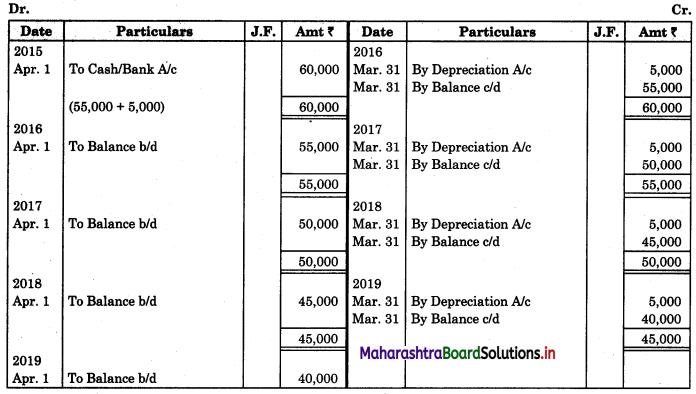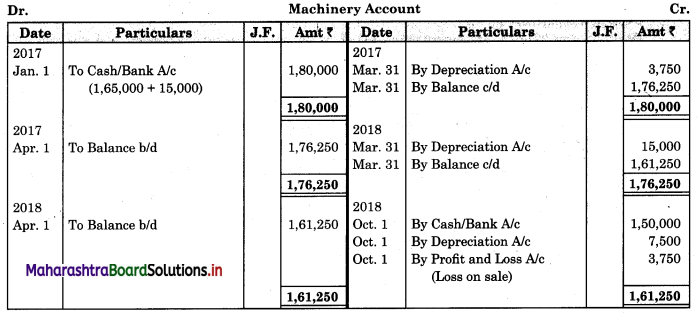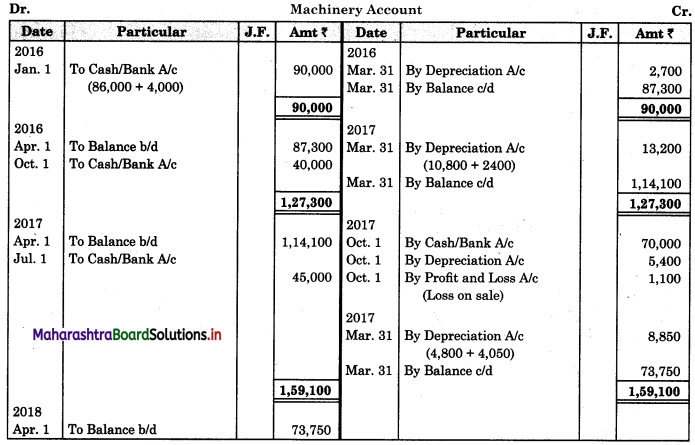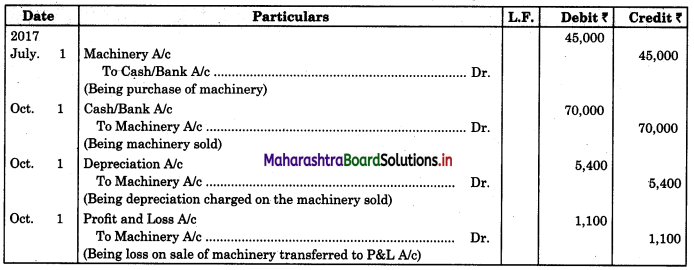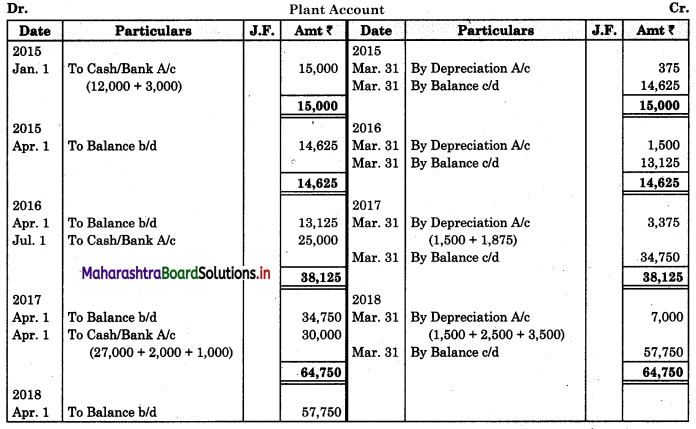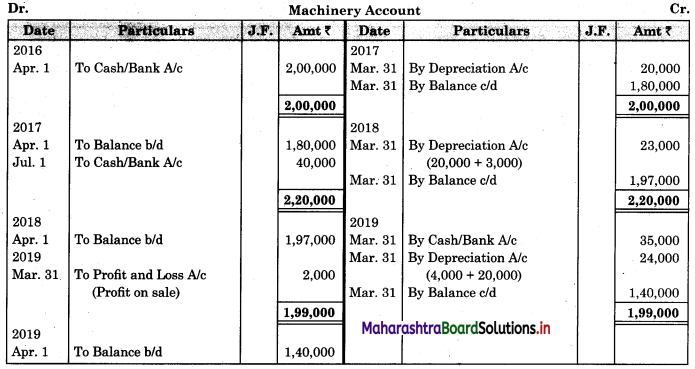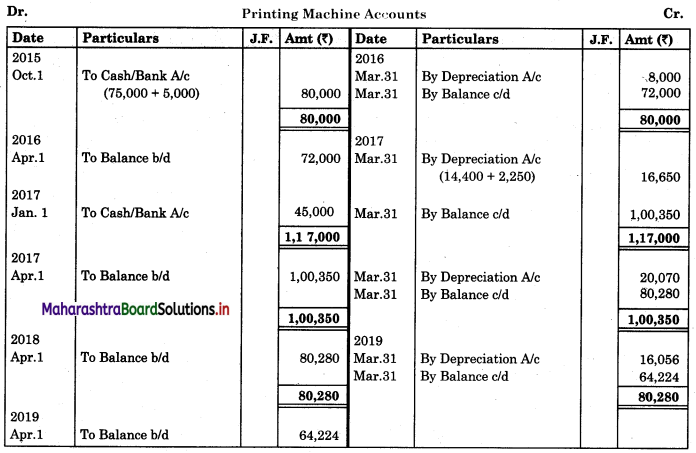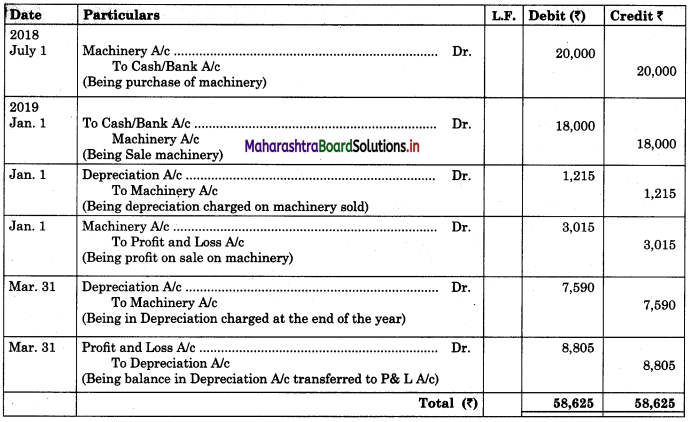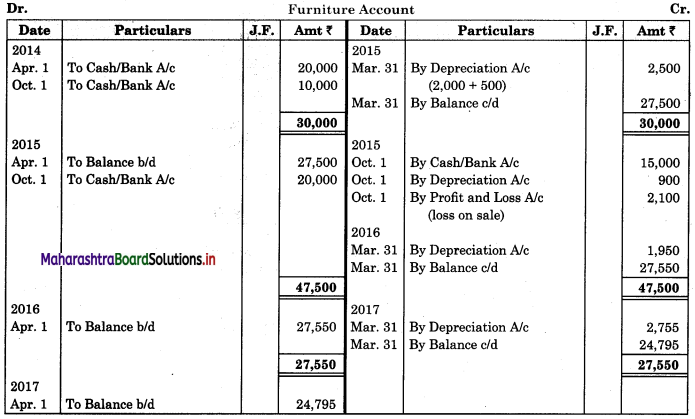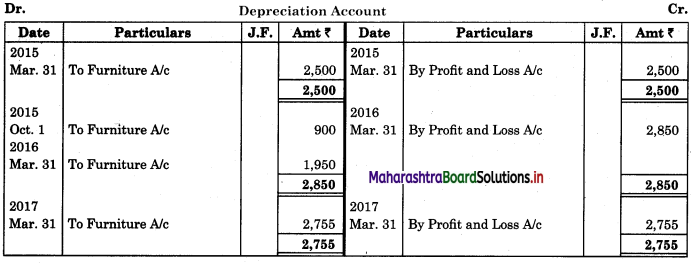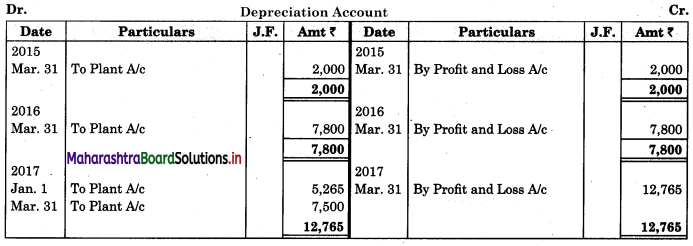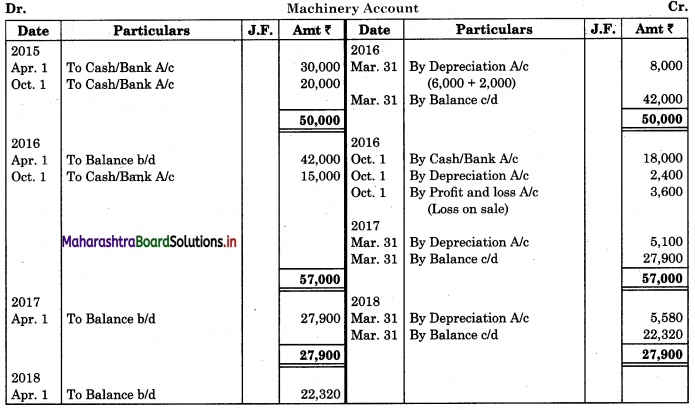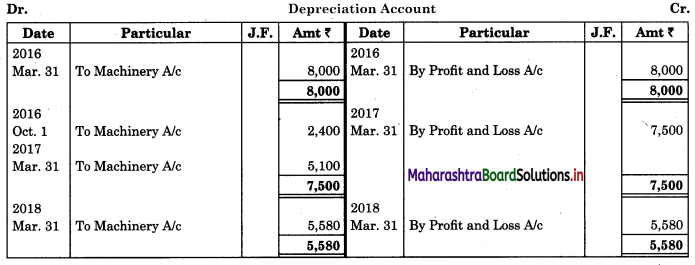Balbharti Maharashtra State Board Marathi Yuvakbharati 11th Digest Chapter 4 झाडांच्या मनात जाऊ Notes, Textbook Exercise Important Questions and Answers.
Maharashtra State Board 11th Marathi Yuvakbharati Solutions Chapter 4 झाडांच्या मनात जाऊ
11th Marathi Digest Chapter 4 झाडांच्या मनात जाऊ Textbook Questions and Answers
कृती
1. अ. योग्य पर्याय निवडून वाक्ये पूर्ण करा.
प्रश्न 1.
पोपटी स्पंदनासाठी म्हणजे –
(अ) पोपटी पानात जाण्यासाठी
(आ) उत्साहाने सळसळण्यासाठी
(इ) पानांचे विचार घेण्यासाठी.
उत्तर :
पोपटी स्पंदनासाठी म्हणजे – पानांचे विचार घेण्यासाठी.
प्रश्न 2.
जन्माला अत्तर घालत म्हणजे –
(अ) दुसऱ्याला आनंद देत.
(आ) दुसऱ्याला उत्साही करत.
(इ) स्वसमर्पणातून दुसऱ्याला आनंद देत.
उत्तर :
जन्माला अलर घालत म्हणजे – स्वसमर्पणातून दुसऱ्याला आनंद देत.
![]()
प्रश्न 3.
तो फाया कानी ठेवू ….. म्हणजे
(अ) सुंगधी वृत्ती जोपासू.
(आ) अत्तराचा स्प्रे मारू.
(इ) कानात अत्तर ठेव.
उत्तर :
तो फाया कानी ठेवू …. म्हणजे – सुंगधी वृत्ती जोपासू.
प्रश्न 4.
भिरभिरणारे तोरण दाराला आणून लावू …. म्हणजे
(अ) दारांना तोरणाने सजवू..
(आ) दाराला हलतेफुलते तोरण लावू.
(इ) निसर्गाच्या संगतीत स्वत:चे जीवन आनंदी करू.
उत्तर :
भिरभिरणारे तोरण दाराला आणून लावू…. म्हणजे – निसर्गाच्या संगतीत स्वत:चे जीवन आनंदी करू,
प्रश्न 5.
मी झाड होऊन तेथे, पसरीन आपुले बाहू….. म्हणजे –
(अ) निसर्गाचाच एक घटक होऊन सर्वांना भेटेन.
(आ) झाड होऊन फांदया पसरीन,
(इ) झाड होऊन सावली देईन.
उत्तर:
मी झाड होऊन तेथे, पसरीन आपुले वाहू …. म्हणजे – निसर्गाचाच एक घटक होऊन सर्वांना भेटेन.
आ. खालील कृतींतून मिळणारा संदेश कवितेच्या आधारे लिहा.
प्रश्न 1.

उत्तर:
| निसर्गातील घटकांच्या सोबतीने केलेली कृती | सूचित होणारा अर्थ |
| 1. कोकिळ होऊनी गाऊ | समरसतेने जीवन जगू |
| 2. गाण्यात ऋतूच्या आपण चल खळाळून रे वाहू | जीवनाचा आनंद लुटू |
2. अ. खालील काव्यपंक्तींचा तुम्हांला समजलेला अर्थ स्पष्ट करा.
प्रश्न 1.
झाडांच्या मनात जाऊ, पानांचे विचार होऊ ……….
उत्तर :
झाडांच्या मनात जाऊ, पानांचे विचार होऊ ……..
निसर्गाच्या कुशीत जाऊन त्यांचे विचार जाणण्याचा प्रयत्न करू, झाड हे मनुष्यरूपी प्रतिमा घेतली तर माणसांच्या मनात शिरून त्यांचे विचार ऐकू, जाणून घेऊ म्हणजे मतभेद कमी होतील.
![]()
प्रश्न 2.
हातात ऊन डुचमळते नि सूर्य लागतो पोहू ……….
उत्तर :
हातात ऊन दुचमळते नि सूर्य लागतो पोहू ………
आपल्या ओंजळीत असणारे दुसऱ्याच्या हातात देताना मन कातर होतं आणि आपलं अंतरंग त्यात दिसू लागतं.
आ. खालील तक्ता पूर्ण करा.
प्रश्न 1.

उत्तर:

3. काव्यसौंदर्य
प्रश्न अ.
‘पोपटी स्पंदनासाठी, कोकिळ होऊन गाऊ’ या काव्यपंक्तींतील अर्थसौंदर्य स्पष्ट करा.
उत्तर :
कवी नलेश पाटील यांना झाड व्हायचे आहे. झाडांच्या मनात शिरून, पानांच्या मनातील विचार समजून घ्यायचे आहेत. हे म्हणजेच माणूस म्हणून जगताना दुसऱ्या (झाडाच्या) माणसाच्या मनात पोहोचून त्यांचे विचार जाणून घ्यायचे आहेत. हे पोपटी स्पंदनासाठी करायचे आहे. म्हणजे चांगल्या नात्यांसाठी हा हिरवेपणा जपायचा आहे. म्हणजे आयुष्याचे सुरेल गाणे गाता येऊ शकते. इथे पोपटी स्पंदन ही रंगप्रतिमा वापरली आहे.
प्रश्न आ.
ऊन आणि सावली यांच्या प्रतीकांतून सूचित होणारा आशय कवितेच्या आधारे लिहा.
उत्तर :
ऊन आणि सावली हा निसर्गाचा प्रकाशखेळ असतो. वस्तूच्या ज्या बाजूने ऊन असते. त्याच्याविरुद्ध बाजूला त्या वस्तूची सावली पडत असते. झाडांच्या विविध आकाराच्या सावल्या आपल्याला दिसतात त्या त्यांच्यावर पडणाऱ्या ऊनामुळे. झाडांच्या पायापासून त्याची सावली दिसत असते. या कवीतेत कवी माणसाला झाड म्हणून संबोधतो. माणसालाही ऊन-सावली हे खेळ अनुभवायला लागतात. त्याच्या आयुष्यातील प्रखर प्रसंग, घटना उन्हासारखी दाहकता देतात. तर चांगल्या घटना सावलीसारखी माया, आसरा देतात. सावली जरी उन्हामुळे पडत असली तरी उन्हावरच ती स्वत:ची नक्षी कोरत असते. उन्हालाही शीतलता देण्याचा यत्न करते.
प्रश्न इ.
‘डोळ्यातं झऱ्याचे पाणी’ या शब्दसमूहातील भावसौंदर्य उलगडून लिहा.
उत्तर :
जल, वायू, पृथ्वी, आकाश, भूमी ही आपली पंचतत्त्वे आहेत. यांच्याशिवाय आपण जगू शकत नाही. यातील जलतत्त्व हे 70% ने व्यापलेले आहे. या जलाशिवाय जीवन अपूर्ण आहे. आपल्या जीवनात आनंदाच्या वा अतीव दुःखाच्या प्रसंगी डोळ्यात पाणीच व्यापून राहते. अन्यातील खळाळते पाणी तृष्णा भागवते पण तेच पाण्याचे रूप डोळ्यात दाटून आले की दुःखद भावना प्रकट करते.
![]()
4. अभिव्यक्ती :
प्रश्न अ.
तुम्ही ‘झाडांच्या मनात शिरला आहात’ अशी कल्पना करून ते कल्पनाचित्र शब्दबद्ध करा.
उत्तर :
सर्वांना विसावा, आधार देणाऱ्या झाडांच्या मनात मी शिरलो आणि मी मला मिळालेल्या मनुष्य जन्माची खंत करू लागलो. झाड कसं जन्माला येतं ते तुम्हालाही माहीत आहेच, बीजाला कोंब फुटले की त्याचा जन्म होतो. त्याच्या बाल्यावस्थेची ती अवस्था फार लोभसवाणी असते. अंकुरित झालेल्या बियाण्यांमधून ते नवीन जन्माला सुरुवात करत असते. तेव्हाच ते दोन्ही पाकळ्या मिटून बंदन करून जन्माला येते.
निसर्गाकडून मिळणाऱ्या सर्वच गोष्टींबद्दल कृतज्ञता व्यक्त करण्याचा त्याचा सदैव भाव असतो. माझे ‘मी’ पण त्याचे कधीच तो दाखवत नाही. निसर्गातीलच ऊन, वारा, पाकस यांच्यावर तो वाचत असतो. पाणी मिळवण्यासाठी त्याची मूळे खोलखोलवर जमिनीत शिरतात. पण हे पाणी मिळालं आहे त्या पाण्याचे उपकारही लक्षात ठेवतात, म्हणूनच झाडं जिथे जास्त तिथे पावसाचे प्रमाण जास्त असतं. निसर्गातील सर्वच घटकांबद्दल त्याच्या मनात आत्मीयता असते. विहार करणारे पक्षी, त्यांची घरटी, पिलावळ यांचे ते घर असते.
अनेकांना सामावून घेऊन इतरांना आनंद देत स्वतः आनंदी राहणं हे झाडापेक्षा दुसऱ्या कुणालाच कळलं नाही. आपल्यात जे जे आहे ते ते दुसऱ्याला दयावं ही किमया त्यालाच साधली आहे. वातावरणातील अशुद्धता आपल्यात घेऊन शुद्ध वातावरण ठेवताना त्याचाही कस लागतो पण विनातक्रार काम करताना ते दिसतं, आपला जन्मच इतरांसाठी आहे हे कधीही ते विसरत नाही म्हणून झाडं जे काही देतात त्यामुळे आपण परिपूर्ण होतो. आपल्या मानवाची झोळी मात्र दुबळी आहे.
प्रश्न आ.
निसर्गातील घटक व मानवी जीवन यांचा परस्परसंबंध स्पष्ट करा.
उत्तर :
निसर्ग ज्या पद्धतीने मानवाला सर्वकाही देत असतो त्याचे मोजमाप कधीच करता येणार नाही. मानवी जीवनच मुळी निसर्गातील पंचतत्त्वांवर आधारलेलं आहे. भूमी, वायू, जल, आकाश, अग्नी या पंचतत्त्वांशिवाय आपण अपूर्ण आहोत. मानवाने आपल्या बुद्धीच्या बळावर या पंचतत्त्वांचा वापर करून स्वत:चे जीवन सुखकर केलं पण तरीही तो परिपूर्ण होऊ शकला नाही.
कारण मुळातच तो परावलंबी आहे. पण त्याला हे अजून समजलेच नाही आहे. ज्या पृथ्वीवर. भमीवर आपण राहतो त्या भूमीवर जर पृथ्वीच्या पोटातील लाव्हारस बाहेर पडू लागला तर? अथवा सतत भूकंप होऊ लागले तर? मानव या पृथ्वीवर राहूच शकणार नाही. वाऱ्याचा वेग वाढला आणि त्याने वादळ निर्माण झाले तर मानव कुठेच स्थिर राहू शकणार नाही.
अग्नीरूपी, वणवा जर जंगलातून पेट घेऊ लागला, भूमीतून बाहेर ज्वालामुखीच्या रूपाने बाहेर पडू लागला तर मानव असहाय्य होईल. पृथ्वीवर असलेले जलसाठे तसंच पाऊस यांनी भयंकर रूप धारण केले तर ….. मानवाचे अस्तित्व नष्ट होईल. आकाशातील सूर्य, चंद्र, तारे यांचे अस्तित्व नसेल तर दिवस-रात्र, ऋतू या सर्वांवरच परिणाम होईल. याच बरोबरीने जलचर, उभयचर, भूचर या चरांवरती प्राणी-पक्षीही महत्त्वाचे आहेत. निसर्गातूनच मानवाची सौंदर्यदृष्टी विकसित झाली. संगीत, रूपरस, गंध, स्पर्श यांचे ज्ञान निसर्गामधूनच मानवाला मिळाले आहे. म्हणून निसर्गातील प्रत्येक घटकांवर मानवी जीवन अवलंबून असलेले दिसते.
![]()
5. ‘झाडांच्या मनात जाऊ’ या कवितेचे रसग्रहण करा.
प्रश्न 1.
‘झाडांच्या मनात जाऊ’ या कवितेचे रसग्रहण करा.
उत्तर:
कवी नलेश पाटील हे निसर्ग कवी म्हणून ओळखले जातात. त्यांच्या कवितेत निसर्ग, त्याच्या रंगरूपासह अवतरतो. निसर्गातील अनेक गोष्टी मानवाला केवळ आनंद देत असतात. त्याची देण्याची अमर्याद शक्ती आहे. निसर्गाच्या या शक्तीला आपण ओळखलं की आपण त्याच्याशी एकरूप होत जातो, कवी निसर्गाकडून अनेक गोष्टींचा आनंद घेत जगत आहे. झाडांच्या मनात जाऊ या कवितेत कवी या निसर्गातील अनेक गोष्टींचे वर्णन करून आपल्याला त्याच्या ताकदीचे दर्शन घडवत आहे.
झाडांच्या मनात जाऊन कवीला त्याच्या फांदयांवर असणारी पाने आहेत. त्यांच्या मनापर्यंत पोहोचवायचे आहे. झाडांचे असलेली पोपटी श्वास त्याला आपलेसे करायचेत आणि त्या झाडावर असलेल्या कोकिळेसारखे सुरेख सुरेल गाणे गायचे आहे. वसंतातील बहरामध्ये तो सावळ्या कोकिळेचा सूर ऐकत ऐकत मनाला रिझबू. वसंत ऋतूमध्ये झाडांना आलेला बहर हा विविध रंगांच्या फुलांचा आहे. त्या फुलांमधील सुगंध सर्वत्र पसरल्यामुळे मन आनंदी झालं आहे. नैसर्गिक फुलांचा गंध जणू काही आपल्या जन्माला अत्तर मिळालं आहे असं कवीला वाटतं. त्या कोकिळेच्या सरासोबत गाणं गात अत्तराचा फाया कानी ठेवन, आपले जगणे आनंदी करावे असं कवीला वाटते.
बागेत, रानात अनेक फुलपाखरे आहेत, त्याच्या पंखांवर विविध त-हेचे रंग आहेत, ते पाहून जणू काही ते निसर्गपंचमी खेळून आले आहेत असे कवीला वाटते. विविध फुलांवर बसलेली ही फुलपाखरे त्याचा रंग आपल्यावर धारण करतात की काय असं वाटू लागतं. त्या फुलपाखरांचा थवा सर्वत्र फिरताना दिसत आहे. हे तोरण रानावनात सर्वत्र भिरभिरत आहे. हे तोरण आपल्या दाराला लावण्याची तीव्र इच्छा कवीला होत आहे, त्या फुलपाखरांच्या पंखांना पताका ही उपमा फार सजगतेने वापरली आहे.
हा तर उत्सव आहे या पाखरांचा, त्या पाखरांच्या थव्याचे तोरण आपल्या दाराला लावावे म्हणजेच आपल्या दारीसुद्धा हा उत्सव साजरा व्हावा असं कवीला वाटत आहे. रानातील झरे निर्मळपणे वाहत आहेत. ते पाणी अश्रू बनूनही एखादयाच्या डोळ्यात उतरते. दोन्ही ठिकाणी पाण्याचीच रूपे आहेत. पण एक आहे ते निर्मळपणाने वाहत आहे. तर दुसरे पाणी कुणाच्या तरी करणीने डोळ्यात उतरले आहे. झऱ्याच्या पाण्याचा खळखळाट ऐकून कवीला असं वाटतेय की हे पाणी आनंदाचे गीत गात आहे. अथवा देवाघरची गाणी गात आहे. या गाण्याच्या ऋतूमध्ये आपणही खळाळत वाहत जाऊ, कोणतेही पाश न ठेवता वाहत जाणं, प्रवाही होणं हे कवीला सुंदर वाटत आहे.
कवी हे खळाळते पाणी पाहून खुश होतो आणि अलगद त्याचे मन त्या पाण्यातील एका खडकावर जाऊन बसते. ही कल्पनाच किती संदर आहे. मन पाण्याचा भाग होऊन खडकावर जाऊन बसतं आणि मग जे पाणी खळाळते होते तेच पाणी थई थई नाचताना दिसते. हा कवीच्या तरल मनाचा आणखी एक अविष्कार दिसतो की सुरेल गाण्याची लकेर होऊन त्याचे मन पाण्यात बसते आणि मग ते पाणी नाचतानाही दिसते. त्या मनमुक्त नाचण्याचा आनंद घेत असताना एक तुषाराचे रोप म्हणजेच खडकांवर पडणारे पाणी कवीच्या अंगावर पडून स्वत:च्या मायेची पखरण करत आहे, त्याला न्हाऊ घालत आहे.
आदिमानवाच्या काळापासून आपण पंचमहाभूतांना प्रमाण मानून त्यांची पूजा करत आलो आहोत. हेच तत्त्व कवी कवितेत दाखवून म्हणत आहे आकाशतत्त्व मी ऑजळीत जरासे धरले. ते ही जरासे कारण आकाश विस्तीर्ण आहे ते ऑजळीत मावू शकणार नाही, आपली तेवढी कुवत नाही, पण या आकाशाला ओंजळीत धरून अवघ्या पाण्याला सूजनत्व देण्याकरता त्या पाण्याचीच ओटी आकाशाने भरली. ओटी भरणं हे सृजनशीलता आहे, ती ओटी भरताना आकाशातील ऊन हातात दुचमळते आणि सूर्य त्यात पोहायला लागतो, म्हणजे आकाशासमवेत त्याची ही बिंबसुद्धा त्या पाण्यासोबत विलीन होतात.
हे फांदीवरील पक्षी त्यांना बदलणारा ऋतू कळतो, बदललेली हवा कळते, सृष्टीतले सूक्ष्म बदल कळतात कारण ते हा हंगाम जगतात. ते स्या हंगामात खरे साक्षीदार आहेत. झाडांच्या बुंध्याशी जी सावली हलत असते ती इतकी जिंवत असते की जणू ती सावली आपल्या रूपातून स्वतःला नव्हे तर उन्हाला उजाळा देत असते. सावल्यांमधून दिसणारे ऊन हे सावलीत अभावाने दिसणारे ऊन नव्हे तर सावलीत मुद्दामहून काढलेली नक्षी आहे आणि झाडावर दिसणारे कावळे हे या काळ्या सावलीलाच सावलीचे काळे पंख फुटून तयार झालेले कावळे आहेत. कावळ्यांचा जन्म निर्माणाचा हा वेगळाच काव्यात्मक अनुबंध शोधला गेलाय. अशा रूपकांसाठीच नलेश पाटील लोकप्रिय होते.
निसर्गाच्या अस्तित्वाचे असे वेगळे विभ्रम ही कवी नलेश यांच्या कवितेची ओळख आहे. एका सच्चा चित्रकाराने निसर्गाकडे किती काव्यात्मक नजरेने पाहावे याचा वस्तुपाठ म्हणजे नलेश यांची कविता. कवी शेवटी म्हणतो की मानवी स्पर्श जिथे नसतील, फुलपाखरांची संगत लाभेल अशा रानात ईश्वर मला तू टाक, माझे बाहू पसरून मी झाड होऊन जगेन, माझे जगणे केवळ सृष्टीमय होऊन जाईल. मला स्वतःला बहर येईल, या शब्दांतील एकावेळी कोणतेही एक अक्षर बदलून नवीन अर्थपूर्ण शब्द तयार करा. नवीन शब्दातील एक अक्षर बदलून नवीन अर्थपूर्ण शब्द तयार करा, शेवटच्या टप्यापर्यंत कमीत कमी शब्दांत पोहोचा.
उदा. सुंदर-घायाळ
सुंदर – आदर – आदळ – आयाळ – घायाळ
- डोंगर – …… …… ….. अंबर
- शारदा – ………………………….. पुराण
- परात – …………… कानात
- आदर – ………… पहाट
- साखर – …………. नगर
उत्तर :
- डोंगर – आगर – मगर – अंधार – अंबर
- शारदा – वरदा – वरण – पुरण – पुराण
- परात – वरात – रानात – नादात – कानात
- आदर – पदर – पहार – रहाट – पहाट
- साखर – खजूर – मजूर – मगर – नगर
11th Marathi Book Answers Chapter 4 झाडांच्या मनात जाऊ Additional Important Questions and Answers
खालील पठित पदय पंक्तींच्या आधारे सूचनेनुसार कृती करा.
चौकट पूर्ण करा.
प्रश्न 1.
- फाया ठेवण्याची जागा –
- हा पक्षी होऊन गायचे आहे –
- रंगपंचमी खेळून हे भिजले –
- तोरण लावण्याची जागा –
उत्तर:
- कान
- कोकिळ
- फुलपाखरू
- दार
योग्य पर्याय निवडा.
प्रश्न 1.
- बहरात वसंतमधल्या तो सूर (सावळा / बावळा / कावळा) ऐकत.
- हा थवा असे (रंगीत / संगीत / मनगीत / पताकाच फिरणारी.
- हे उधाण (दुःखाचे / भीतीचे / आनंदाचे) ही देवाघरची गाणी.
उत्तर :
- सावळा
- रंगीत
- आनंदाचे
अभिव्यक्ती :
प्रश्न 1.
खेळून रंगपंचमी, फुलपाखरे भिजली सारी
हा थवा असे रंगीत की पताकाच फिरणारी
या ओळीतील आशयसौन्दर्य स्पष्ट करा.
उत्तर :
कवी नलेश पाटील यांच्या ‘झाडांच्या मनात जाऊ’ या कवितेत कवी निसर्गापासून माणूस कसा आनंद घेऊ शकतो ते सांगण्याचा प्रयत्न करत आहे. फुलपाखरे ही निसर्गाचाच भाग, किती विविधतेने नटलेली असतात, अनेक रंग त्यांच्या पंखावर असतात. अल्प आयुष्य जरी असले तरी ते भिरभिरत जगताना दिसतात, कवी त्याच्या सौंदर्याकडे आकृष्ट होतो. त्याला वाटते की निसर्ग किंती वेगळ्या शता भिरभिम लागला की जण पताकाच फिरत आहेत असे वाटते. निसर्गाची विविध रंगरूपे असतात, त्यांना समजून घेऊन आयुष्याची संदर रंगपंचमी खेळता येऊ शकते. त्याकरता माणसाला समजन घेणं महत्त्वाचे आहे.
प्रश्न 2.
निसर्गातील एखादया घटकाकडून तुम्हांला शिकायला मिळाले त्या घटकाबद्दल तुमचे मत स्पष्ट करा.
उत्तर :
कवी नलेश पाटील यांच्या कवितेची शिकवण पाहता पाहता मी निसर्गाकडे वेगळ्या दृष्टीने पाहू लागलो. मला निसर्ग आवडतो. तो भरभरून आपल्याला देत असतो. त्यातल्या त्यात मी पृथ्वीकडून किती गोष्टी शिकण्यासारख्या आहेत हे पाहू लागलो. आपल्या अखंड मानव जातीचा भार ती उचलत आहे. मानवाने किती प्रगती केली, आदिमानवापासून ते आतापर्यंत त्याने केलेली प्रगती ही केवळ पृथ्वीच्या सहनशक्तीमुळे झालेली आहे असं मला वाटतं, इतक्या इमारती, इतकी वाहतूक त्याकरता पृथ्वीच्या गर्भाशयावर आपण सतत हल्ले करत असतो. तरी ती आपल्याला माफ करते. झीज सोसत राहते.
अनेकदा तिला आपण अस्वच्छ करत असतो तरी ती मूकपणे सारे सहन करते. तिचे स्वच्छता अभियान सुरू करतो. पण ते सुद्धा नीट पाळत नाही. तीन उन्हामुळे जमिनीची लाही लाही होते. ते आपण सहन करू शकत नाही पण पृथ्वी त्यालाही सामोरी जाते, तिच्या मनात खदखदणारा ज्वालामुखी सहन करत ती संयम ठेवून आपल्याला आधार देण्याचा प्रयत्न करत असते. ती अनेक गोष्टी आपल्या पोटात घेऊ शकते. ती सर्वांचा आधार असते. आपण तिच्यासाठी नेहमी कृतज्ञता बाळगायला हवी असे मला वाटते.
![]()
झाडांच्या मनात जाऊ Summary in Marathi
प्रस्तावनाः
पालघर येथे जन्माला आलेले कवी नलेश पाटील हे इंग्रजी माध्यमात शिकूनही त्यांचा मराठीचा गाढा अभ्यास होता. मुंबईतील जे. जे. । इन्स्टिट्यूट ऑफ अप्लाइड आर्ट मध्ये त्यांचे शिक्षण झाले. ‘कवितेच्या गावा जावे’ या कवितेच्या कार्यक्रमात त्यांची विशेष ओळख समाजमानसात तयार झाली. ‘टूरदूर’, ‘हमाल दे धमाल’ या चित्रपटांसाठी त्यांनी गीत रचना केली. ‘हिरवं भान’ हा त्यांचा कवितासंग्रह, ‘नक्षत्रांचे देणे’ या दूरचित्रवाणीवरील कार्यक्रमातही त्यांच्या कविता गायल्या गेल्या.
गावात बालपण गेलेले त्यात नंतरच्या काळात रंगांची मिळालेली सोबत यांमुळे निसर्गाच्या विविध रंगप्रतिमा त्यांच्या काव्यात सापडतात. शब्द, लय, नाद, अर्थ यांचा विविधांगी प्रयोग त्यांनी आपल्या काव्यात केला. शब्दांतून चित्रमय मांडणी करणे यात त्यांचा हातखंडा आहे.
कवितेचा आशय:
निसर्ग आणि आपण एकमेकांशी इतके जोडले गेलो आहोत की एकमेकांपासून आपली ताटातूट होऊ शकत नाही. निसर्ग आपल्यावर अवलंबून नाही पण आपण मात्र क्षणाक्षणाला निसर्गावर अवलंबून आहोत. मानवाने स्वत:ची उत्क्रांती केली ती निसर्ग शिक्षणातूनच. हे नैसर्गिक शिक्षण त्याला त्याच्या संवेदनांपर्यंत पोहोचवतं. त्याच्या मनाला, विचारांना चालना देतं. कवीला या निसर्गाची नितांत ओढ आहे. त्याच्या प्रत्येक सोहळ्याशी तादात्म्य होण्याची उत्सुकता आहे. म्हणून निसर्गाच्या विविध रूपांचे दर्शन कवी या कवितेतून रेखाटतो.
त्याला वाटते झाडांच्या मनात जाऊन त्यांच्यावरील पानांचे विचार व्हावे. झाडांनाही मन असते. ते त्याच्या पानरूपी कृतीतून तो प्रकट करतो असं त्याला वाटतं. या झाडाचा पोपटी रंग आपल्या श्वासात उतरावा याकरता त्याला त्याच्या श्वासात उतरावे असे वाटते. त्यासाठी आपण कोकिळ व्हावं असं त्याला वाटते, वसंतरूपी बहर आला की कोकिळ गाऊ लागतो. तो निसर्गाचेच जणू गीत गातो. आपल्याला सुद्धा निसर्गगीत गायचे असेल तर कोकिळ व्हावे लागेल.
वसंतातील बहर फुलत जातो. सावळ्या रंगाचा कोकिळ त्याचा सूर लावत जातो. वसंतात अनंत फुले फुलून येतात त्या फुलांचा गंध सर्वत्र पसरत जातो. अनेक जन्मांना त्यांचे अत्तर पुनरुज्जीवन देत असते. या पाखरांच्या, रानाच्या सुराबरोबर आपण त्या सुगंधी अत्तराचा फाया कानामध्ये ठेवू. त्यामुळे आपलेही जगणे सुगंधी, सुरेल होईल.
बागेत, रानात फिरणारी भिरभिरणारी फुलपाखरे पाहून कवीला वाटते की ही फुलपाखरे जणू काही रंगपंचमीच खेळून बाहेर पडली आहेत. या फुलपाखरांचे विविध रंग कवीला आकषून घेतात. या फुलपाखरांचा थवा उडत असताना त्यांच्या भिरभिरत्या पंखांमुळे या हलणाऱ्या पताकाच आहेत असे कवीला वाटते. हे छान रंगीबेरंगी तोरण दाराला आणून लावावे असा मोह कवीला फुलपाखरांच्या रंगांकडे पाहून होतो.
रानातील झरे निर्मळपणे वाहत असतात, त्यांच्या वाहण्यातच संगीत असतं. हे झरे जणू काही परमेश्वराचे डोळे आहेत असं कवीला वाटतं. या डोळ्यात झऱ्याचे पाणी भरभरून वाहत आहे. हा आनंद आहे की देवाने आपल्याकरता पाठवलेली गाणी आहेत असा प्रश्न कवीला पडतो. या झयाच्या गाण्याच्या ऋतूत आपणही खळाळत जाऊ, या प्रवाहात एकरूप होऊ आणि पाण्यासारखे निर्मळ राहू असं कवीला वाटतं.
पाण्याशी एकरूप होताना कवीचं मन तिथल्याच एका खडकावर बसून जातं. आजूबाजूला असणारी कारंजी मनसोक्तपणे थुईथुई करत आनंद घेताना दिसतात. यातील हे कारंज्याचे रोप कवीवर आपले तृषार उडवून त्याला न्हाऊ घालण्याचा प्रयत्न करीत आहेत.
या निसर्गाशी एकरूप होता होता कवी अलगद आपल्या ओंजळीमध्ये आकाश धरू पाहतो. या आकाशाला ओंजळीत घेऊन कवी अवघ्या पाण्याची ओटी भरतो तर हातात ऊन येऊन बसते, डुचमळते आणि त्या पाणभरल्या ओंजळीत सूर्याचे प्रतिबिंब पोहायला लागते. असा पाणी, प्रकाशाचा खेळ निसर्गात राहूनच अनुभवता येतो.
निसर्गातील विविध रंगांचे पक्षी तरी किती? या पक्ष्यांचासुद्धा हंगाम असतो. त्या हंगामात ते ते पक्षी आपल्याला दर्शन देतात. हे पक्षी झाडांवर रमतात. त्याच्या बुंध्यात, खोडात आपले अस्तित्व दाखवतात. झाडांच्या सावल्या इतरत्र पसरलेल्या पाहन त्या उन्हावर जण नक्षी काढत आहेत. असं कवीला वाटतं. मग या झाडांवर बसलेले काऊ, चिऊ उडू लागले की ते सावलीतुनहीं प्रकट होतात, दिसू लागतात ते पाहून कवीला वाटतं की या सावल्यांनाच जणू पंख फुटले आहेत. या सुंदर निसर्गात रमता रमता कवीला वाटतं की जिथे मानवी स्पर्श होणार नाही, खूप फुलपाखरं जिथं असतील अशा रानात हे परमेश्वरा मला झाड बनून जन्माला घाल, तिथे मी माझे बाहू पसरून बसेन आणि या सृष्टीचा एक भाग होऊन त्यासवे जगण्याचे गीत गाईन.
![]()
समानार्थी शब्द / पर्यायी शब्द :
- स्पंदन – श्वास – (breathing, breath).
- फाया – अत्तर लावलेला कापसाचा बोळा, अत्तराचा अंश – (fragrant, essence).
- पताका – ध्याना – (lag).
- करणी – कृत्य, कृती, क्रिया – (act).
- तुषार – पाण्याचे फवारे (spray of water) – कारंजाचे पाणी.
- डुचमळते – हलते.
- खडक – दगड – (hard stone / rock).
- नक्षी – वेलबुट्टी – (design, decoration).
